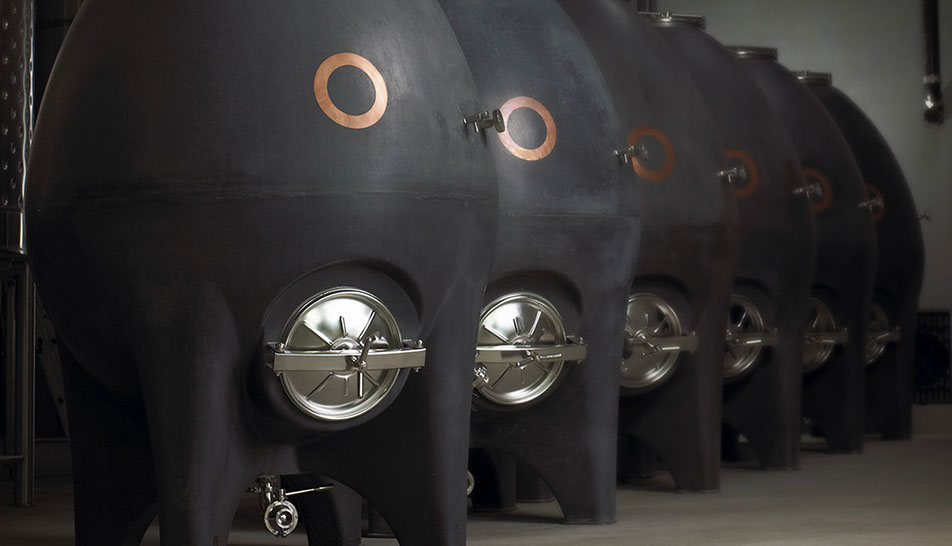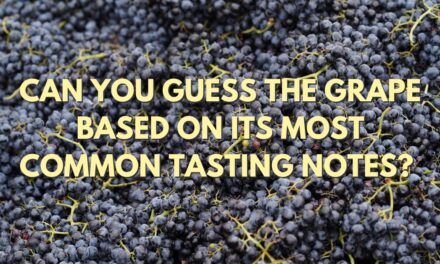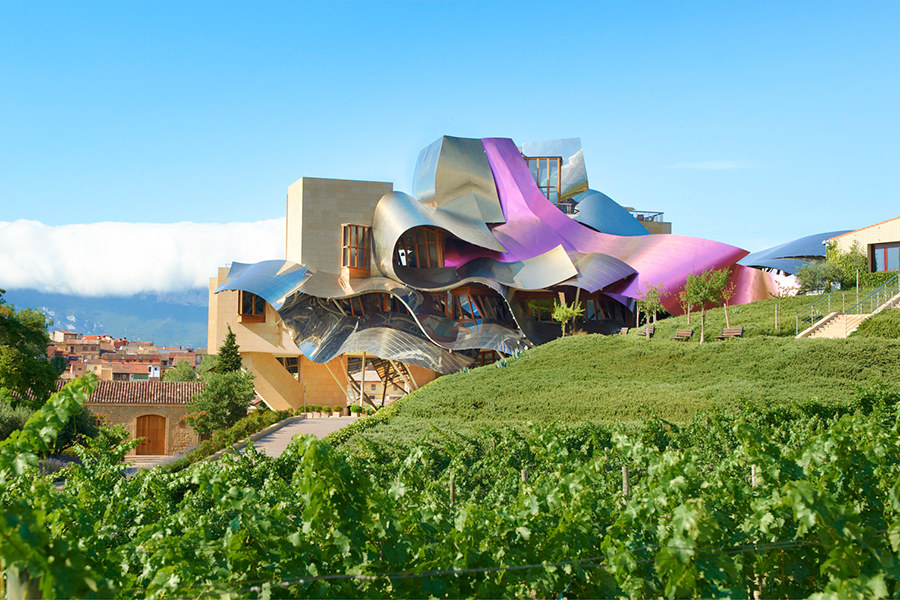Not long ago California wineries fermented wine in huge concrete vats and Redwood tanks. While the Redwood tanks have gone the way of the Dodo bird, concrete egg fermentation has been finding its way back into the cellar.
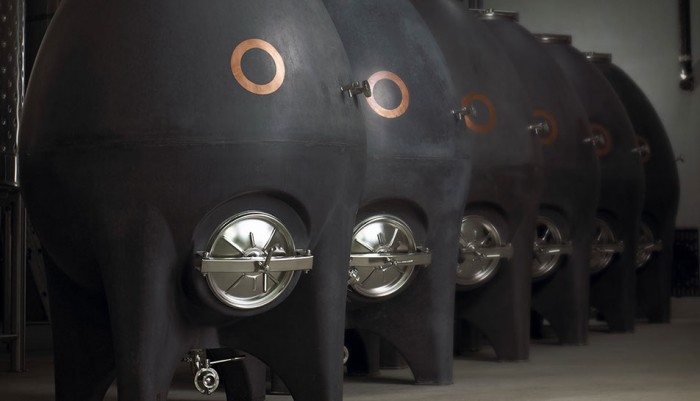
Egg-shaped tanks from Sonoma Cast
The Supernatural Power of Concrete
The use of concrete in winemaking goes back centuries, but the egg-shaped container is fairly new. Biodynamic guru Michel Chapoutier designed the first one in 2001, and believes the rounded shape “concentrates celestial energy” as gases from fermentation keep the wine inside moving in a vortex. Werner Michlits from Meinklang in Austria also project a mystical quality upon the eggs, crafting dozens of their own to use at their winery. Comparing the same wine in oak, stainless steel and concrete, Michlits says “that concrete had the best texture and mouth feeling; it was fuller, rounder, and with more complex darker fruit on the Sankt Laurent. Wood gave more tannin structure; stainless steel was the lightest.”
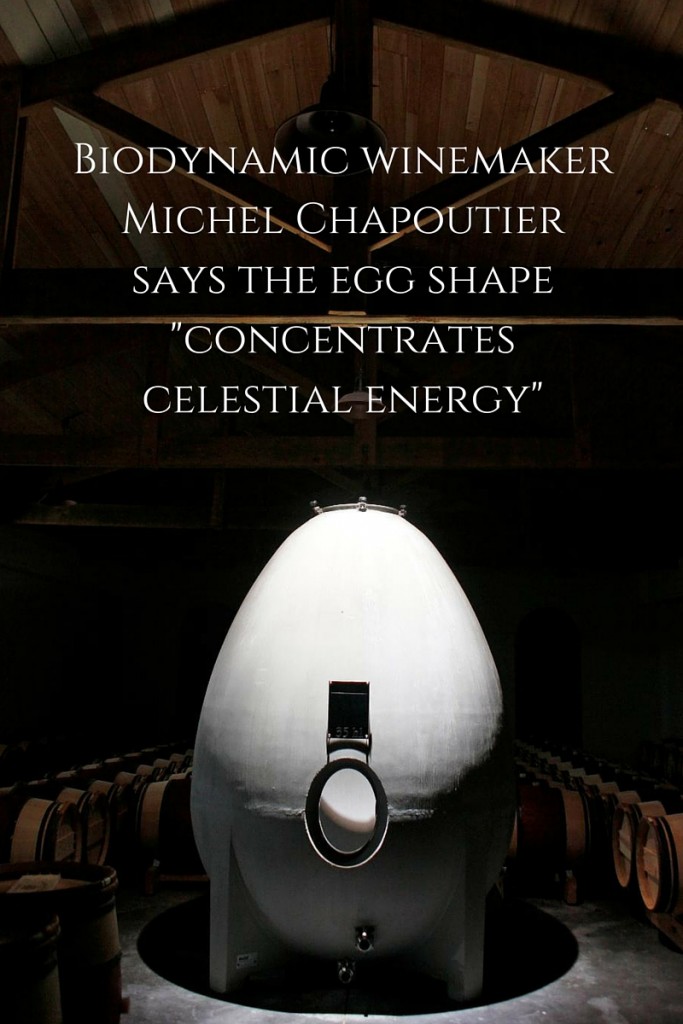
Whether concrete egg fermentation taps into some earthly transmission of power or not, most winemakers agree it adds texture and creaminess to wine without obscuring the pure fruit flavors. Anna Matzinger of Archer Summit in Oregon told Zester’s Daily, “What the egg offers is this really interesting textural depth, and then you still get the precision of what you might get in stainless steel fermentation.”
The Practical Benefits
Magical or not, winemakers like using concrete for a variety of reasons.
- Insulation. Stabilizing temperature is crucial during fermentation and concrete offers great insulation against temperature swings. Stainless steel is conductive, meaning it easily transfers external temperatures to the wine inside.
- Oxygenation. Concrete is slightly porous, just like oak barrels, which assists in oxygenation. But the oxygen doesn’t come from outside. Instead it’s released from tiny bubbles and pockets on the interior which form as the concrete cures. This micro-oxygenation helps yeasts thrive and allows aroma and flavor compounds to develop.
- Movement. As fermentation gases rise to the top they promote constant movement thanks to the narrow conical shape at the top of the egg. The wine stays in contact with the lees much longer, reducing or eliminating the need for pump-overs and lees stirring.
- Texture. Wine develops a creamy texture without the secondary flavors that oak imparts. Some winemakers find a touch of minerality in the finished wine.
- Freshness. Many winemakers find concrete preserves fruit flavors and aromas unlike oak which imparts vanilla, tannin, and spice notes.
- Less racking. Fermenting wine in concrete sees very little reduction in volume, reducing the need to rack the wine as often.
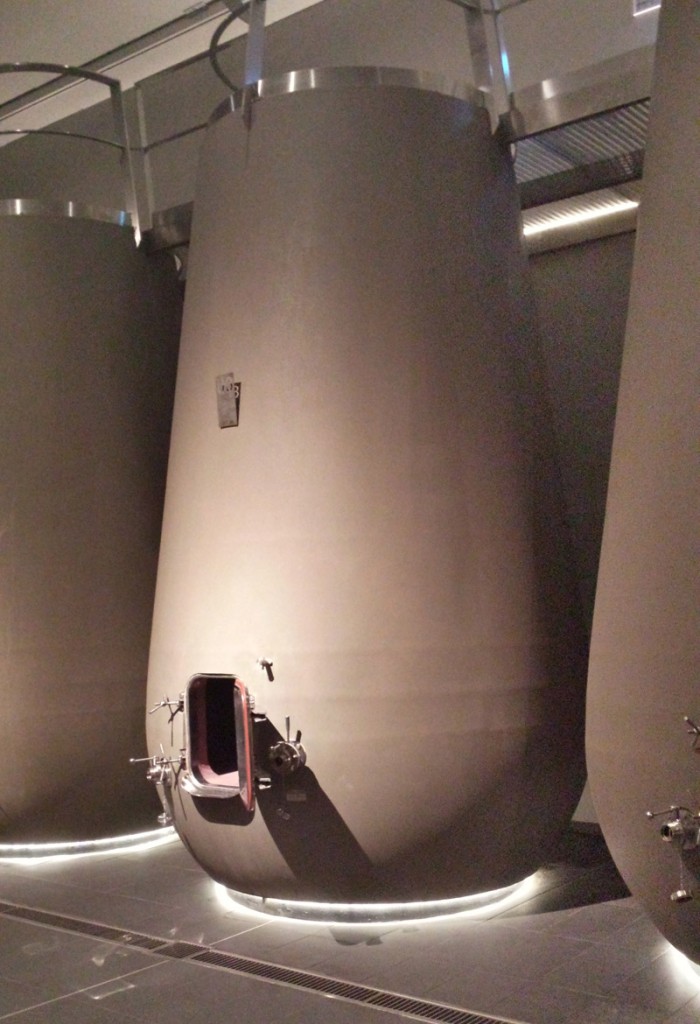
Château Prieuré-Lichine employs a room full of these huge cylindrical concrete tanks for fermentation.
The Hunt Is On
Ten years ago it was hard to find concrete egg fermentation in Napa Valley. Rudd Oakville Estate was among the first to import a few from France in 2003. Getting the eggs wasn’t easy though. They had to import the heavy tanks from France at a considerable cost. Luckily a few domestic options emerged. Steve Rosenblatt of Sonoma Cast Stone recognized the opportunity and began making concrete tanks in 2011. Today you’ll find them at Quintessa, Harlan Estate, Odette, and Viader to name just a few.
Most winemakers see concrete as another tool they can use to make better wine. Some use it exclusively for fermentation and aging of certain wines, while others use it to ferment a small batch for added complexity in a final blend. Not everyone loves concrete though – Flowers winery tried the tanks for several years but found the results “muddy” and lacking the precision their stainless and oak fermentation.
Tweet this:
Concrete concentrates celestial energy says biodynamic guru Michel Chapoutier Click To Tweet Winemakers find concrete preserves fruit flavors and aromas Click To Tweet
References: Sonoma Stone, Zesters Daily, Wine Wisdom

